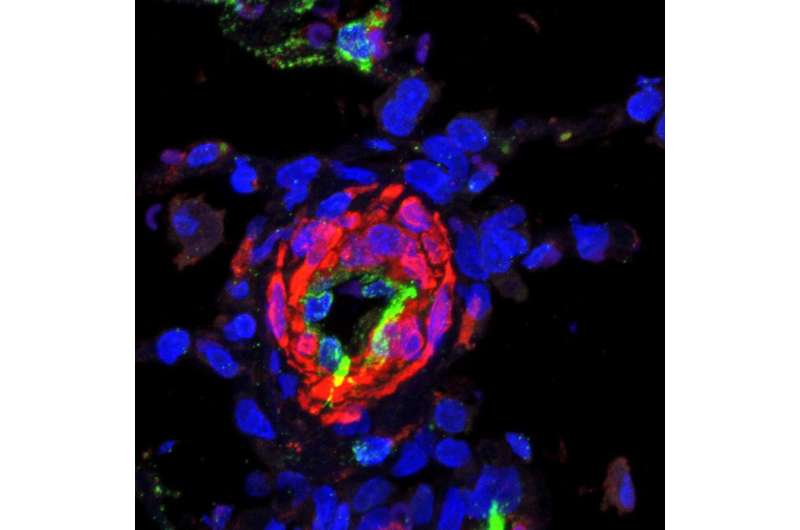New drug target discovered for the lung disease PAH

Scientists have identified a molecular pathway that contributes to the development of pulmonary arterial hypertension (PAH), a severe, often fatal condition that has no cure.
The discovery, published Sept. 12, 2019, in Nature Communications, suggests a new target for developing new drug therapies for PAH, according to researchers at Cincinnati Children's Hospital Medical Center.
What is PAH?
This progressive disease is characterized by high blood pressure in the lungs, and affects adults and children. When left untreated, PAH can lead to fatal heart damage.
Scientists have long known that a process called vascular remodeling drives the thickening of lung arteries that contributes to the increased pressure. Reversing vascular remodeling could be curative.
"PAH is a life-threatening disease in adults and can also complicate the repair of congenital heart disease in children," Hegde says. "While progress is being made to develop treatments, there currently is no effective cure available. The new molecular pathway described by our study could be targeted to develop effective therapeutics for the disease."
Targeting the EYA3 protein may someday improve treatment
The current study describes a molecular pathway involving the protein Eyes Absent 3 (EYA3). This protein promotes vascular remodeling and could be targeted in the development of PAH therapeutics, according to lead study investigator Rashmi Hegde, Ph.D., Division of Developmental Biology. EYA proteins have a mechanistically unique enzyme activity first identified by Hedge and her colleagues in 2003.
In this study, the research team manipulated transgenic mice with CRISPR gene editing technology to inactivate EYA3, which significantly protected the lung arteries from vascular remodeling. When researchers tested pharmacological inhibition with previously identified drugs that target the EYA3 pathway, significant reversal of vascular remodeling was seen in laboratory rat models.
What's next in PAH research?
Additional research is needed before a treatment strategy could be available for human testing. Beyond existing medications that target EYA3, the researchers want to design a treatment that even more precisely targets remodeling in PAH.
More information: Yuhua Wang et al, The EYA3 tyrosine phosphatase activity promotes pulmonary vascular remodeling in pulmonary arterial hypertension, Nature Communications (2019). DOI: 10.1038/s41467-019-12226-1
















